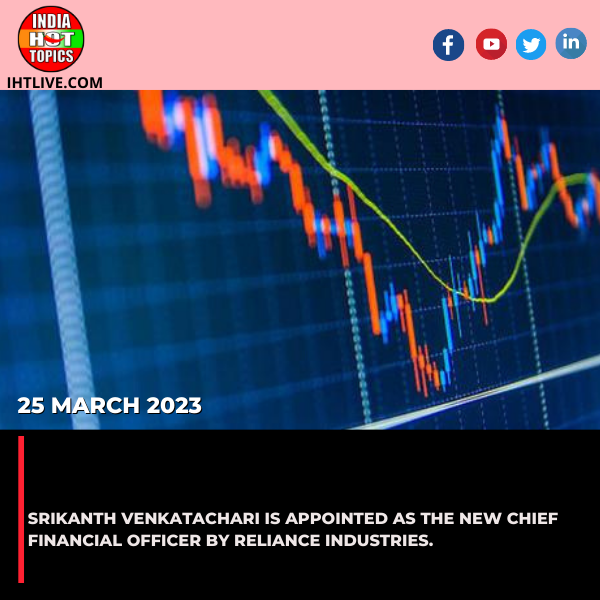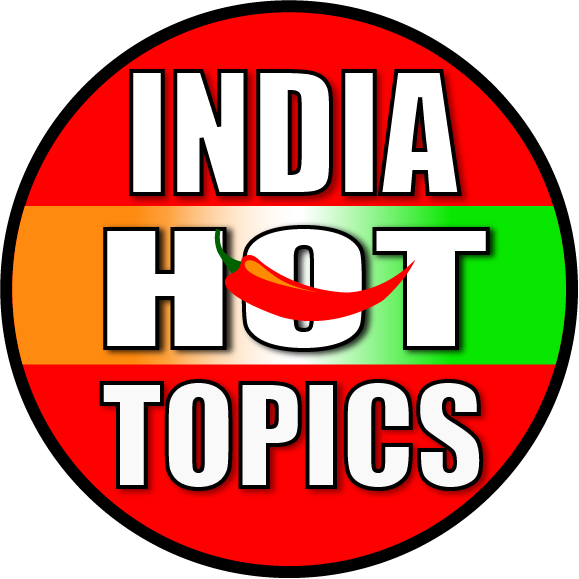Health
Extreme heatwaves Delhi: Five health risks associated with temperatures exceeding 45 degrees

A severe heatwave that reached 45–47 degrees in several areas of North India, including Delhi, has made it crucial to take precautions against heat exposure in order to prevent heatstroke, dehydration, and other heat-related ailments. Elevated body temperatures can cause severe harm to the brain, heart, kidneys, and other organs, as well as other chronic problems. It is imperative that you stay indoors during the hottest parts of the day and stay well-hydrated by drinking lots of water, as well as fruits, vegetables, buttermilk, nimbu paani, and coconut water.
The body’s natural capacity to regulate temperature may be severely compromised above 45 degrees or higher, which can result in disorders like heat stroke, which can cause fever, disorientation, dizziness, or seizures. Extended exposure to high temperatures might potentially harm vital organs such as the heart, brain, and other tissues. If proper measures are not taken to cool the body down, it may potentially be deadly.
According to Dr. Tushar Tayal, Consultant in Internal Medicine at CK Birla Hospital in Gurugram, exposure to outside temperatures more than 45°C (113°F) can have detrimental, even fatal, impacts on human health.
Heat stroke can result from the body’s inability to control its internal temperature at such high temperatures. High body temperature (over 40°C or 104°F), disorientation, unconsciousness, and occasionally convulsions are among the symptoms. Heat stroke can be fatal if medical attention is not received right away. Severe dehydration results from the body losing fluids quickly through perspiration in an effort to cool down. According to the specialist, “this can result in symptoms like intense thirst, dry mouth, decreased urine production, and in severe cases, confusion, dizziness, and fainting.”
Unsettling consequences of the heatwave
Dr. Tayal lists further negative consequences of being in a severe heatwave:
Damage to the brain and heart: Hyperthermia, or dangerously elevated body temperature, can be brought on by extended exposure to intense heat. If left untreated, this illness can harm the muscles, heart, brain, kidneys, and kidneys, which can result in long-term health problems or even death.
Extended exposure to high temperatures can result in heat exhaustion, a milder type of heat-related disease. Severe perspiration, weakness, headache, nausea, dizziness, and cramping in the muscles are some of the symptoms. It can develop into heat stroke if left untreated.
Skin damage: High temperatures can lead to serious skin damage, such as sunburn and, in severe cases, second-degree burns, especially when accompanied with bright sunshine. Long-term exposure to UV radiation can also raise the chance of developing skin cancer.
cites the following five important health impacts of temperatures rising beyond 45 degrees:
1. Heat stroke and exhaustion
The body finds it difficult to regulate its temperature when it is exposed to high temperatures over prolonged periods of time. Heat exhaustion may result from this, which is characterised by symptoms including headaches, nausea, dizziness, and profuse perspiration. Heat exhaustion can develop into heat stroke, a potentially fatal illness when the body’s ability to regulate its temperature fails, if it is not treated quickly. Heat stroke is characterised by a high body temperature (over 40 degrees Celsius), disorientation, a fast heartbeat, and unconsciousness. Getting medical help right away is essential to avoiding fatalities or major problems.
2. Lack of fluids
The body quickly loses water through perspiration when it is really hot, trying to cool down. Insufficient consumption of fluids may result in dehydration. When the body loses more fluids than it takes in, it becomes dehydrated and can’t perform its regular tasks. Dehydration symptoms include weariness, dizziness, dark urine, dry mouth, and decreased urination. Electrolyte abnormalities, shock, and renal damage can result from severe dehydration.
3. Stress on the heart
Elevated body temperature exerts additional strain on the cardiovascular system. Blood arteries dilate (expand) to remove heat, and the heart beats harder to pump more blood to the skin’s surface. This increased effort raises the risk of heart attacks and strokes and can worsen pre-existing cardiac problems. Extreme heat events put older people, those with cardiovascular disease, and people with hypertension at risk.
4. Issues with breathing
Because ground-level ozone and other pollutants are more concentrated in warm weather, the quality of the air might deteriorate. The combination of high temperatures and poor air quality can worsen respiratory ailments including asthma and chronic obstructive pulmonary disease (COPD). Additionally, heat encourages the spread of allergens and particulate particles, which worsens respiratory conditions.
5. Skin issues and heat rash
Heat rash, which is characterised by sweating and prolonged exposure to high temperatures, can result in swollen and clogged sweat ducts, which can produce pain and itchy red lumps on the skin. Furthermore, too much sun exposure raises the possibility of being sunburned, which damages skin and raises the chance of developing skin cancer. In periods of intense heat, wearing adequate clothes and sunscreen is vital to protecting the skin.
Preventative actions
To lessen the damaging effects of intense heat on health
Keep yourself hydrated by drinking a lot of water all day long, even if you don’t feel thirsty. Steer clear of coffee and alcohol since they might dehydrate the body.
Keep cool by spending time in air-conditioned spaces throughout the hottest parts of the day. Take cold showers, use fans, and dress in airy, loose-fitting clothing.
Minimise outdoor activity: Steer clear of vigorous activities, especially during the warmest times of the day. If you must go outside, make sure to drink plenty of water and take frequent rests in the shade.
Keep an eye on those who are susceptible: Due to their increased vulnerability to heat-related diseases, keep a watch on the elderly, young children, and individuals with ongoing medical issues.
Use sunscreen: To shield your skin from damaging UV rays, slather on a broad-spectrum sunscreen with a high SPF.
Being aware of the rising temperatures and being prepared are essential to avoiding health problems associated to heat. Keep yourself and your loved ones safe from the risks of severe heat by keeping up with weather predictions and heat advisories and by taking preventative measures.
General News Platform – https://ihtlive.com/
Entertainment News Platforms – anyflix.in
Construction Infrastructure and Mining News Platform – https://cimreviews.com/
Podcast Platforms – https://anyfm.in/
Health
Meaty rice’: what is it? A sustainable protein that will revolutionise the world’s food supply

Scientists from South Korea are hoping to transform global eating habits by introducing individual rice grains with grown cow cells in a tiny lab in Seoul. Team leader and professor Hong Jin-kee thinks his new so-called “meaty rice” might become an ethical and environmentally sustainable way for people to receive protein, from preventing famines to feeding astronauts in space.
The meal, which is made without using any animals, has the appearance of a typical bowl of rice (although pink), but because it contains beef muscle and fat cell culture, it has a subtle buttery scent. Hong, of Yonsei University in Seoul, stated that “we can obtain animal protein without the slaughter of livestock” by using cultured meat.
Due to environmental worries about greenhouse gas emissions from animal husbandry and ethical qualms about industrial livestock rearing, businesses all over the world have been looking to commercialize meat substitutes like plant-based or cultured meat. With a background in organoids and biomedical sciences, Hong decided to focus his research on rice because it’s the most popular grain in Asia for protein.
Currently, this can be a laborious process: a typical rice grain is individually injected with beef cells, coated with fish gelatin to aid in adhesion, and then cultivated in a petri dish for up to 11 days. According to Hong, rice has a “slightly porous structure,” and after the beef cells are injected, the grain provides “an ideal structure for cells to grow uniformly from the inside out”.
carbon footprint
Compared to ordinary rice, Hong’s “meaty” rice has 7% more fat and 8% more protein. Although Hong and his colleagues are still figuring out how to scale the procedure, he intends to have their invention certified as emergency relief food for two African nations. “For those who are limited to… just one meal a day, a slight increase in (protein content), even by just a few percent, becomes incredibly important,” he stated.
Although it hasn’t authorised any meat that has been grown for human consumption, South Korea declared in 2022 that it would invest millions of dollars in a “foodtech” fund and designated cell-cultured meat as a top research priority. Singapore and the United States sell meat that has been raised. but Italy banned it last year citing a need to safeguard its livestock industry. Some scholars say potential ethical concerns with cultured meat include the sourcing of the initial animal cells.
It’s hard to be “certain about the safety of the serum used in culture media, and the antibiotics and hormones added during the culturing process” , Former Seoul National University emeritus professor Choi Yoon-jae,
By removing the need to produce and farm animals, Hong’s team’s hybrid rice approach greatly reduces the carbon footprint of protein. He calculates that it releases 6.27 kilogrammes (13.8 pounds) of carbon dioxide for every 100 grammes (3.5 ounces) of protein produced, which is eight times less than standard beef production.
Would you consume it?
According to Neil Stephens, a technology and society lecturer at the University of Birmingham, cultured meat has long been “presented as a climate solution compared to traditional livestock”. However, he pointed out that the industry faces difficulties, such as the requirement to be “produced at scale, and cheap, with low energy needs and environmentally friendly inputs,”
“The ‘meaty’ rice might have an advantage over some other cultured meat products” , because it’s a hybrid item that involves “mixing animal cells with plant material — the rice — making cheaper and less energy intensive,” he stated. Nevertheless, it would still need to persuade people to eat it and demonstrate its environmental merits on a large scale. Both could provide difficulties.”
By 2040, only 40% of the world’s meat consumption would come from conventional sources, according to global firm AT Kearney, upending the whole meat sector. According to a 2019 article, “Products such as milk, egg white, gelatin, and fish can be created with similar technology.” Hong is adamant that biotechnology has the power to improve human nutrition consumption.
For instance, he explained, eating lab-grown beef made exclusively of muscle cells rather than fat could help an elderly person suffering from sarcopenia, or muscle loss. He stated that “more biological information becomes available and we need to meticulously control our food” as a new era approaches.
He added that this might imply that a future AI-infused kitchen could assess a person’s health through a blood analysis, then instruct a robot to prepare the most suitable breakfast.
General News Platform – https://ihtlive.com/
Entertainment News Platforms – anyflix.in
Construction Infrastructure and Mining News Platform – https://cimreviews.com/
Podcast Platforms – https://anyfm.in/
Health
World Blood Donor Day 2024: 5 reasons to give blood and information about its health advantages

World Blood Donor Day 2024: Donating blood is a noble task, and it also comes with multiple health benefits. Blood transfusion is done to treat multiple health disorders such as anemia, cancer, etc. People are urged to donate healthy blood as it helps in a steady supply of blood for the healthcare industry. Every year, World Blood Donor Day is celebrated on June 14 to establish the importance of donating blood and how it helps in patient treatment. However, donating blood is a double bonanza–it helps the one donating blood, as well as the one receiving it. As we celebrate the important day today, here are a few things that we should know.
Unexpected health advantages of blood donation:
Promotes heart health:
The act of giving blood improves cardiovascular health. It also lessens blood viscosity, which helps to lower the risk of strokes and heart attacks. Donating blood contributes to maintaining a healthy blood supply, which lessens cardiac strain.
decreases iron stores:
Hemochromatosis, a disorder that can harm organs like the liver and heart, is brought on by an excessive amount of iron in the blood. Regular blood donation reduces extra iron, which is beneficial to general health.
Creation of new blood cells:
The body attempts to make up for blood lost after donating. This promotes the body’s ability to create new cells and carry out tasks efficiently in addition to aiding in the development of new blood cells.
Free health screening:
It is required to undergo a basic health examination, which includes measuring blood pressure, body temperature, pulse, and haemoglobin levels, prior to donating blood. This can assist us in better understanding our bodies and, if necessary, addressing any health issues that may arise.
enhances mental health
We get a psychological lift and feel better when we know that the blood we have donated may save a life or aid someone in need.
General News Platform – https://ihtlive.com/
Entertainment News Platforms – anyflix.in
Construction Infrastructure and Mining News Platform – https://cimreviews.com/
Podcast Platforms – https://anyfm.in/
Health
Women are more vulnerable than men to gonorrhea due to rising antibiotic resistance.

Don’t engage in sexual activity. It is “the only way to completely avoid STIs,” according to public health organizations. Avoid engaging in any oral, anal, or vaginal sex.
It is a sobering piece of wisdom. However, it also makes perfect sense when you look at the most recent data on the spread of antimicrobial resistance (AMR) and bacterial STIs, such as gonorrhea, from the European Centre for Disease Prevention and Control (ECDC).
Antibiotics including azithromycin, ceftriaxone, and cefixime are frequently used in medicine to treat gonorrhea, but their efficacy is declining. And that might be a factor in the rise in gonorrhea infections and STI cases in general throughout Europe, if not the world.
In a study released on June 10, 2024, the ECDC stated that there were 70,881 confirmed cases of gonorrhea in 28 EU/EEA (European Union/European Economic Area) nations in 2022, a 48% increase from the previous year.
AMR is one reason why antibiotics across the board — whether it’s for STIs or an earache — are failing public health efforts. Either we use them too much, or we don’t bother to take all the pills, with the result that bacteria are able to build up a resistance to many of our “go-to” drugs of the past 100 years.
Gonorrhea: What is it?
The Neisseria gonorrhoea bacteria is the cause of gonorrhea. It may impact the esophagus, rectum, or genitalia. Infections are common in young persons (ages 15 to 24).
Women are more likely than males to get an infection since diagnosis is more difficult for them. Women also frequently don’t have symptoms, and when they do, they are typically minor and can be confused for another vaginal or bladder infection. particularly expectant mothers, who may transmit STI infections to their fetus. Undiagnosed sexually transmitted infections can cause pregnancy problems in women or cause infertility.
However, men do experience symptoms, such as painful or enlarged testicles, a burning feeling when peeing, and a discharge that can be white, yellow, or green.
However, this is less common in women than it is in them. Teodora Elvira Wi, who oversees the global HIV, hepatitis, and STI programs at the World Health Organization in Geneva, stated that women must be given priority because they are asymptomatic.
“We need opportunities for women to be screened for STIs, and especially people at higher risk, people who have multiple partners and sexually active adolescents,” stated Wi.
‘Concerning’ antimicrobial resistance to popular medications for gonorrhea
In the ECDC paper, 4,396 gonorrhea samples (also known as “isolates”) from 23 different nations were analyzed. These samples were taken in 2022.
They discovered that “isolates resistant to azithromycin increased significantly to 25.6%, compared to 14.2% in 2021.”
Since azithromycin and ceftriaxone are frequently used together, the ECDC deemed this result to be “particularly concerning.”
Ciprofloxacin resistance rose as well, though not as dramatically: in 2022, 65.9% of isolates showed resistance, up from 62.8% in 2021.
Cefixime resistance remained “low at 0.3%.”
All things considered, the World Health Organization’s data from other regions—Africa and Asia, for example—reflects the ECDC figures.
According to Wi, 73 countries worldwide have reported antimicrobial resistance data in gonorrhea. “Antimicrobial resistance is not the only cause [there], but in countries where antimicrobial resistance is even higher than in Europe, it is contributing to the increase in bacterial STIs,” Wi added.
Pharyngeal (throat) gonorrhea was on the rise in 2022, according to ECDC data, although genital and anorectal gonorrhea cases stayed steady.
How to reduce STI transmission
According to WHO data from 2020, 374 million new cases of syphilis, gonorrhea, chlamydia, and trichomoniasis among individuals aged 15 to 49 occur worldwide each year. The increasing incidence of STI cases was attributed by the WHO to the following factors:
An increase in risky sexual conduct, such as the usage of fewer condoms and a rise in the number of casual and committed relationships
Socioeconomic factors and asymptomatic infections; biological considerations
Due to underfunding of services, there is a paucity of STI services, poor access to STI services, and a shortage of diagnostic test instruments.
Stigma: As a result of stigma, STI services and research are underfunded, and patients are less likely to seek treatment.
In public health initiatives to limit STIs, addressing and/or reversing these variables would be a smart place to start.
Wi advised against quitting entirely, saying that having sex should be accompanied by education. “Have sex, have pleasure in sex, make it a voluntary thing, do it for your sexual well-being and protect yourself the way you protect yourself from other infections,” she stated.
General News Platform – https://ihtlive.com/
Entertainment News Platforms – anyflix.in
Construction Infrastructure and Mining News Platform – https://cimreviews.com/
Podcast Platforms – https://anyfm.in/
-

 India8 months ago
India8 months agoThe afternoon briefing revealed that 97.26% of the ₹2000 notes were returned, and the Israeli Prime Minister committed to war goals.
-

 Business1 year ago
Business1 year agoSrikanth Venkatachari is appointed as the new chief financial officer by Reliance Industries.
-

 Entertainment1 year ago
Entertainment1 year agoNew Season 8 The Walking Dead trailer flashes forward in time
-

 India1 year ago
India1 year agoPM Modi’s Three-Nation Tour Begins with a Traditional Welcome in Papua New Guinea
-

 Fashion7 years ago
Fashion7 years agoThese ’90s fashion trends are making a comeback in 2017
-

 India Hot Topics12 months ago
India Hot Topics12 months agoCenter ‘busts’ 8 YouTube channels for distributing false information.
-

 Business7 years ago
Business7 years agoThe 9 worst mistakes you can ever make at work
-

 India1 year ago
India1 year ago3 Vande Bharat Trains, An E-way: MP’s Infra, Connectivity Projects on Fast Track ahead of Assembly Polls







